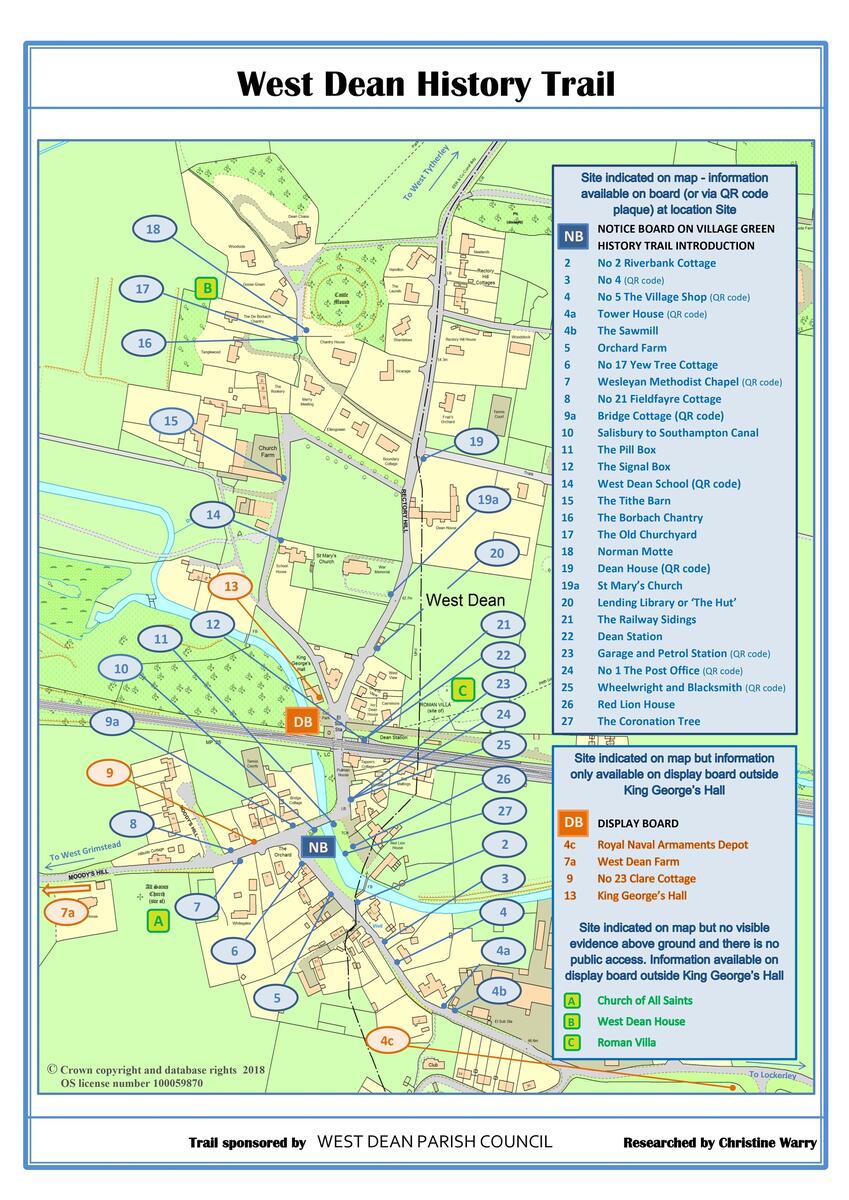History Trail

Trail Opened in August 2018
The trail highlights thirty-five sites of historic interest, most of them being visible as you follow the trail map around the village.
At many of the sites information is provided. This is either by an information board at the location, ia your smartphone using a QR Code found on a plaque at the location which directs you to the site on this website. In many cases the information not only describes the history of the site but explores the social history of the village.
For a few sites, the location is identified on the trail map, but the information board is sited on a display board at the King George’s Hall car park.
Additionally, there are three sites identified where there is now no evidence above ground, and where there is no public access. Information about these important historic sites is given on a panel on this notice board.
Finally, we hope you enjoy walking the trail, but please respect the privacy of the residents.
NAME OF THE VILLAGE
In Saxon times, at least by 880, the village name was Deone. By the time of the Doomsday Book in 1086 the name had become Duene, meaning quiet and sheltered, for the Wiltshire entry and Dene for the Hampshire entry. In 1265 the name was Westdone and by 1270 this had become Westdune. In the present name Dean means a vale or the narrow wooded valley of a stream, still an accurate description and even more so in times past.
MAJOR HAPPENINGS
- In 1350 twelve tenants were dead from the Black Plague and their holdings were vacant and deteriorating. Only three tenants were alive.
- Between 1796 and 1802 the canal was built through the village and was in use until about 1808.
- In the 1840s construction work preceded the arrival of the railway which opened to both goods and passenger traffic in 1847.
- In the late 1930s miners came to dig the tunnels for the Royal Naval Armaments Depot and over 30 houses were built for the Admiralty Constabulary and other staff – a big increase for a village centre of only 64 houses at the time.
- A camp for American Forces was built in the village and occupied during the later years of the Second World War.
